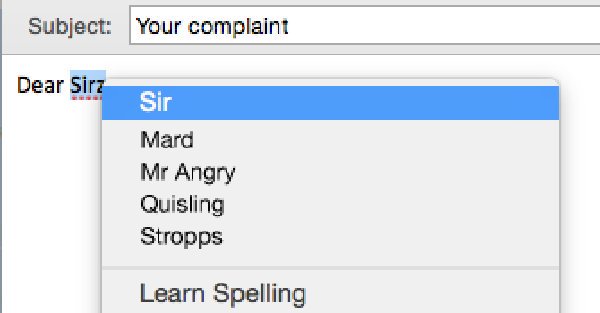
5 Tips for the Perfect Email Greeting
This year we were lucky enough to be invited to the LIAR IV politeness / impoliteness linguistics conference in Manchester. At the conference, we presented our latest study on what customers think about service email greetings.
Here’s what we think you should bear in mind when choosing your greeting. If you want more information on why, we’ve summarised what we covered at the conference below the tips.
1. Take your cues from how your customer says hello — nothing will tell you more about how someone likes to be greeted than how they write to you. That doesn’t necessarily mean copying their greeting. Just bear in mind how formal or informal (e.g. Dear vs Hi) and personal or impersonal (e.g. first name vs no name) it is.
2. Think about your sector, and why customers are in touch — our most recent study showed that they shape customer expectations of how formal greetings will be. Complaints to banks was where most formality was expected. Product information from retailers was where customers anticipated least.
3. What does your brand say? — consider how your company wants to relate to customers. Perhaps you’re the kind of brand that breaks expectations and surprises people (in a good way). For example, Banking may be where the majority of customers anticipate formality. But customers of Virgin (a brand that’s well known for it’s straight talking friendly service) might want less formality — and some customers might be a bit disappointed if Virgin were to write like others.
4. Get customers’ names right — although choosing the right greeting is important, it’s not the only thing you should be thinking about. In our survey, spelling a customer’s name wrong firmly came top of what was thought of as inappropriate. See below for what customers said they’d do if you get it wrong.
5. Hello, I’m a robot — as well as how your advisors say hi, think about how automatic responses sound too. Confirming that an email’s landed in your inbox, or how long it’ll take you to reply, may not require a greeting at all. If you decide to leave it off, it has to be clear that there isn’t a person behind the email though. And it’s a good idea to make any follow-up email from your team feel that bit more personal.
Hello science, goodbye guesswork?

Question: How formal do you find these greetings? (Greetings ranked by mean average scores.)
We asked people to score some commonly used greetings according to how formal they find them. No big surprises when we averaged the formality scores: ‘To whom it may concern’ came out most formal (along with ‘Dear Mr Smith’). And a simple ‘Hi’ was most informal.
But take a closer look below — and you’ll see the averages hide a wide spread of opinion. One man’s ‘Dear Paul’ is another’s ‘Hi Paul’.
In our previous greetings blog, we noted that 70% of people thought that they weren’t greeted appropriately at times. The difference of opinion on formality might be one of the things that’s causing this. Because if we all agreed what’s the most polite, we’d all be getting it right more often.
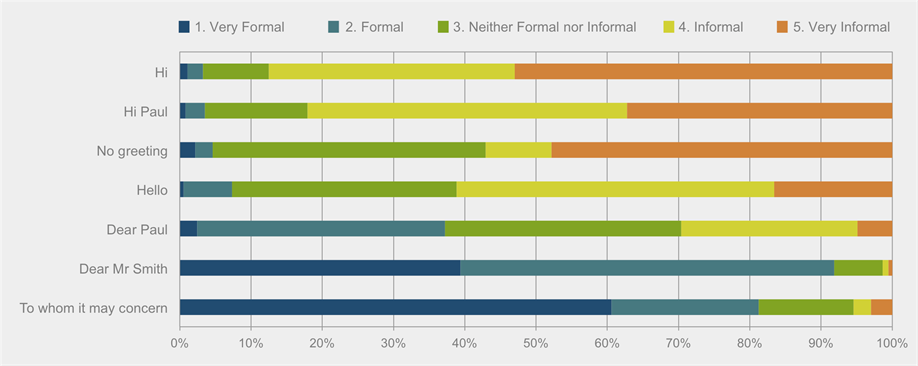
Question: How formal do you find these greetings? (Percentage of consumers choosing each factor for every greeting.)
Sector and reason for contact shape customers’ expectations
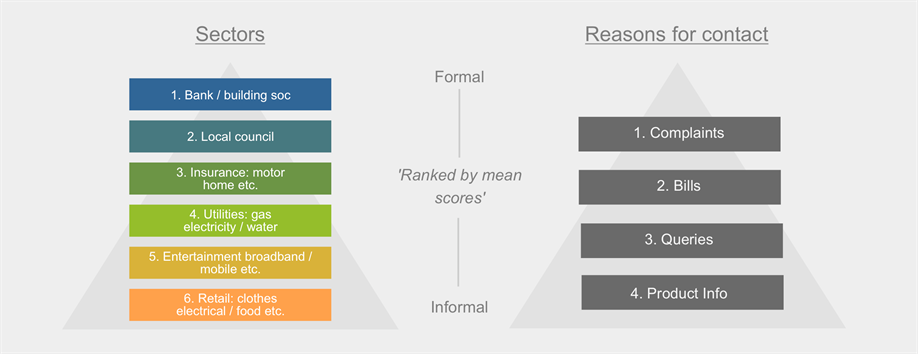
Question: How formal do you think greetings should be? (Sectors and reasons for contact ranked by mean averages.)When we asked about the formality of email hellos for different sectors, consumers said banks / building societies should be most formal and retailers the least. When it came to reasons for contact, complaints came top for formality, with product info at the bottom.One well-known politeness theory by academics Brown and Levinson says that how we choose to communicate is based on the ‘weightiness’ of the interaction — the ‘social distance’ between participants, their relative ‘power’ and the ‘imposition’ of a request. Our results show that when ‘serious’ matters are being discussed, more formality is expected (e.g. customers expected greetings from banks in complaint responses to be most formal). Whether seriousness is the same thing as weightiness still has us wondering. Brown and Levinson also say that formality is just one way to be polite — some companies may choose camaraderie while others may prefer deference.
Greetings are important, as are names
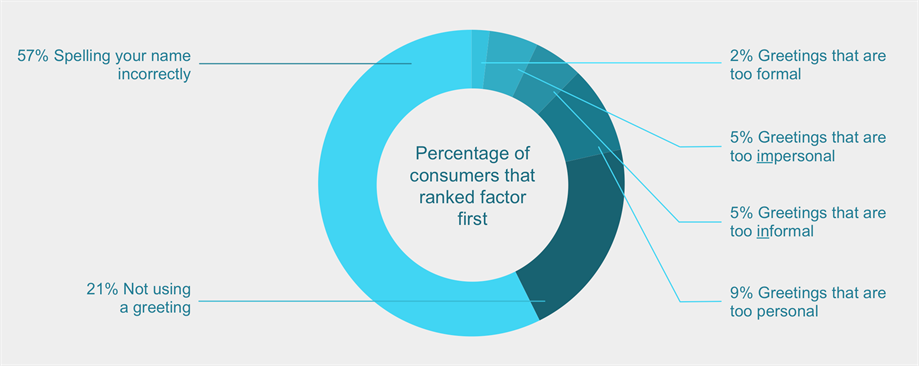
Question: What’s most inappropriate? (Percentage of consumers rating a factor first)
We thought it’d be interesting to see how important greetings are when compared to another well-known (and related) customer gripe — getting their name right.57% said they thought it was the most inappropriate of the options, beating ‘no greeting’ by some margin. Making sure that customer details are correct lays the foundation for a great greeting.
The cost of getting it wrong
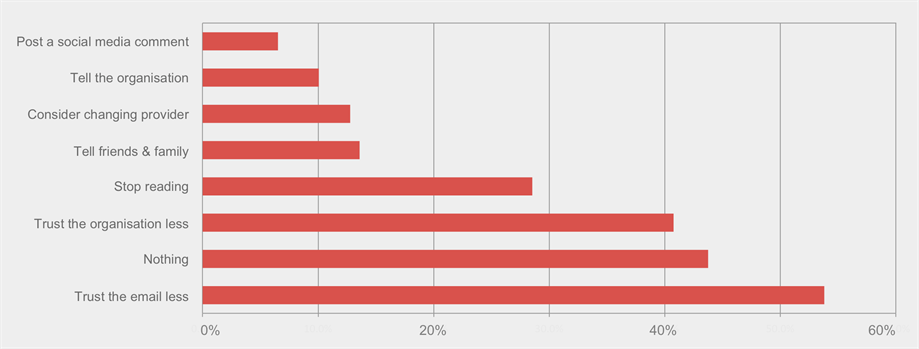
If a greeting is inappropriate, which of these are you most likely to do? (Customers could choose multiple outcomes. Percentage of consumers choosing an outcome.)
What do customers do if a greeting is inappropriate? The good news: you probably won’t lose a customer just because they didn’t like the greeting. Leaving, telling an organisation and becoming a vocal detractor were at the bottom of the list.
The bad news: ‘Trust the email less’ (54%) came top, followed by ‘Nothing’ (44%) and ‘Trust the company less’ (41%). Greetings set the tone of the interaction, and they can undermine the credibility of your message before you’ve even properly started — making customers more likely to call, write back, or doubt you.
Last updated 27th July 2016
Research notes
Adults aged 18+ in GB interviewed online via Survey Monkey between 7 – 10 April 2016. Surveys were conducted across the country. Margin of error: ± 4.6% at a 95% confidence level assuming the worst case (50% of consumers selecting a factor).


